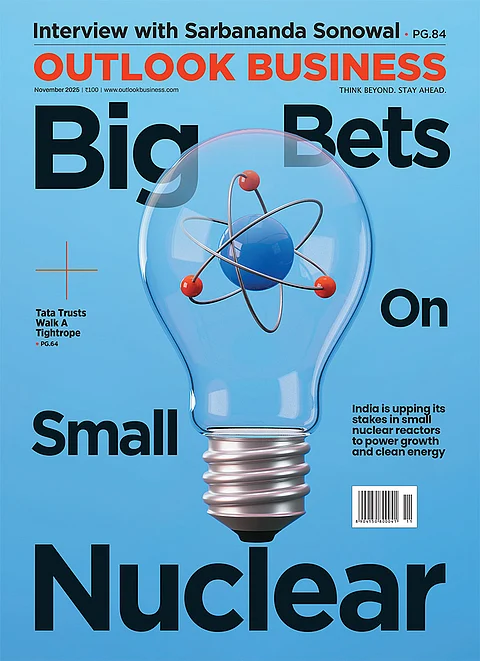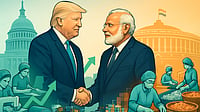
Government signals openness to suggestions on easing PN3 to improve India’s investment climate.
PN3 reviews follow rising FDI concerns, including 96% drop in net inflows.
China’s investment share remains minimal despite strong bilateral trade links.
Officials push faster clearances to boost FDI and strengthen policy certainty.
The government is open to considering any feedback on easing Press Note 3 (PN3) for creating a better investment climate in India, said a government source on Tuesday, signalling a willingness to recalibrate a policy that has long stood as a gatekeeper for capital from India’s neighbours.
"On Press Note 3, the government is open to suggestions," said a top government official familiar with the discussion. "In fact, we are open to all suggestions regarding investment in India. But every decision must be weighed carefully so the nation’s interest is balanced with ease of doing business," the official added.
It was a small signal, but in policy circles, it can travel far. The comment came shortly after the Prime Minister’s Office reviewed PN3 last week in a meeting that brought together representatives from multiple ministries.
PN3, introduced in April 2020 at the height of the pandemic, requires companies from countries sharing a land border with India to seek mandatory multi-ministerial approval before investing—extending even to venture capital funds.
The safeguard was designed to prevent “opportunistic takeovers” of Indian firms during a moment of economic vulnerability. It was designed as a shield. But shields, by nature, also slow things down.
Now, with global capital scanning for stable homes amid geopolitical turbulence, India appears to be assessing whether parts of that shield need reshaping.
Yesterday, Commerce and Industry Minister Piyush Goyal held a meeting with stakeholders to discuss ways to attract foreign direct investment (FDI) and foreign institutional investment (FII) into the country by making the processes faster, smoother and more efficient.
The three-hour-long meeting, which included senior officials from the Reserve Bank of India, the Securities and Exchange Board of India and other financial regulators, centred on easing approval processes, accelerating regulatory clearances and resolving the hurdles faced by foreign investors.
India's FDI Picture
Despite its pitch as a rising investment hub, India’s FDI landscape continues to be shaped by old obstacles—from bureaucratic delays to geopolitical frictions—and the data reflects this uneasy reality.
Gross FDI inflows rose 14% to $81bn last fiscal, but foreign parent firms repatriated $51bn from India in the same period. With a huge surge in repatriation and Indian companies also investing record sums abroad, India's net FDI dropped by 96% to $0.4 bn in FY25.
India recorded a negative net FDI of –$616mn in August, the second dip into the red during FY26 after May’s –$5mn print.
Yet, India's long-term picture remained positive so, far as FDI inflows have increased 20 times from FY01 to FY25 and stood at $1.09trn between April 2000 and June 2025. During the same period, India's top FDI sources were Mauritius at $182.27bn with 24% share, followed by Singapore with $179.48bn and the US contributing $76.26bn.
Notably, none of India’s neighbouring countries—including China, the world’s second-largest economy—has made a significant dent in India’s inflows over the past quarter century.
Earlier, talking to Outlook Business, Ashok Kantha, former Indian Ambassador to China, highlighted that the inflows from China have always been small and often targeted areas where minimal investment secured a large market share, sometimes even in data-sensitive sectors.
The China Paradox
The India–China economic relationship is a paradox. Despite modest investment levels, trade between the two countries has held firm. China continues to rank among India’s top import sources. During April-October 2025, India's imports from China stood at $73.99bn as compared to $66.13bn in last year during the same period.
Following the Trump administration’s 50% tariffs on most Indian goods in August, domestic manufacturers and private equity players have reportedly pressed the government to streamline PN3 approvals, arguing that Chinese capital remains critical in several sectors and that long delays are derailing business plans.
Even with recent signals of a gradual thaw in bilateral ties—strained further after the 2020 Galwan clash—experts warn against expecting China to play a transformative role in India’s economic trajectory.
The numbers reinforce that caution: between April 2000 and March 2025, Chinese investment in India amounted to just $2.5bn, barely 0.3% of total inflows and placing China as only the 23rd largest foreign investor.
C Veeramani, director at the Centre for Development Studies, noted that more than any other benefits, it is practical to maintain a working relationship with China for stability and strategic autonomy. "The world’s second-largest economy is right next to us; we can’t ignore that," he added.
Seeking Stability
Meanwhile, speaking at an event organised by the Federation of Indian Chambers of Commerce and Industry (Ficci) yesterday, the commerce minister emphasised the need to strengthen policy certainty, maintain currency stability and bolster investor confidence to create a more conducive investment climate.
He also underlined the importance of developing a robust domestic manufacturing base, noting that India must examine its supply chains for vulnerabilities at a time when trade is increasingly being weaponised.
The government's willingness to take another look PN3, with caution, indeed a mark of reflection. India needs capital, but not ready to risk its security. It desires speed but not at the cost of scrutiny. And it wants to appear open for business, even as it navigates some of its most complex geopolitical calculations in decades.
Whether PN3 ultimately changes or remains intact, the mere fact that it is back on the discussion table reveals a deeper shift: India is trying to recalibrate its investment posture for a world where the lines between economics and geopolitics blur more with each passing month.































